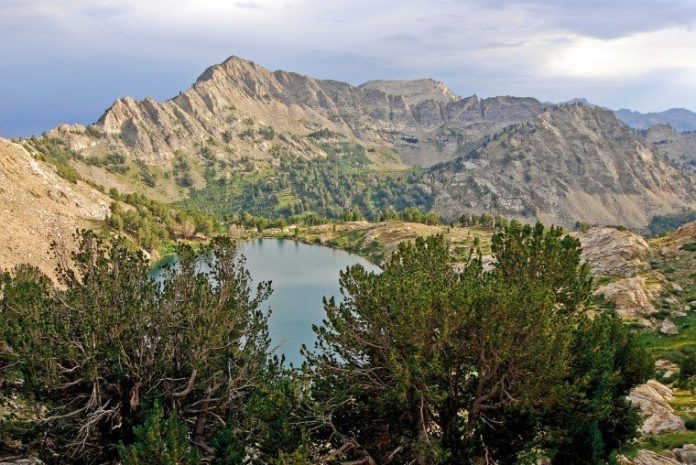The Basin and Range country beyond the Sierra Nevada is Mother Earth bare bones and naked. There are no elegant forests or misty skies to soften the landscape. Instead, the dry desert air and the high-contrast light of a relentless sun sharpen every crease and ridgeline. It is bleak, almost lifeless terrain with few temptations to linger.
I drove to Wyoming this past summer and I was determined to resist the urge to race through this forbidding landscape. Certainly, there must be charms hidden beyond the view from Interstate 80.
Over the years, I have seen the snowcapped Ruby Mountains from a distance as I raced through Nevada and I wondered if there were surprises up there. These mountains are higher than the usual off-the-shelf Nevada mountain ranges. Is there lush mountain scenery hidden up there – an oasis in the midst of a moonscape?
Some photos I had seen of the Ruby Mountains suggested there was. My research revealed that there were a number of locations in and around the range that held scenic delights, but the location that popped up time and again was Lamoille Canyon. Since I didn’t have time for the full tour, I headed for the main attraction.
After lunch at a taqueria in downtown Elko, I hopped on Highway 227 and headed toward the canyon 20 miles away. As I neared the canyon entrance and the small burg of Lamoille, the moisture that the Ruby Mountains capture transformed the valley floor from high desert to lush green pastures.
At the canyon entrance, the transition from the high desert plain to mountain landscape was immediate. The canyon road edged up a classic U-shaped glacial valley. Alongside a raging Lamoille Creek, aspens and pines decorated the valley’s lower reaches. Above were bare granite peaks.
I stopped and hopped out of the car where aptly named Right Fork Canyon joins the main canyon. The scene looked like a postcard from the Swiss Alps. Far below, at the junction of the two broad valleys, the buildings of Lion’s Camp rested in a bucolic valley while sunny granite walls reached high above.
A mile farther up the road, I snagged a campsite at a forest service campground and asked my neighbor where a one-day visitor should take a hike. Following that advice, I drove the final several miles to the end of the road at 8,800 feet and began the climb up to Liberty Pass at the crest of the range.
Every step was a delight. This is a popular trail and can be crowded, but it was late in the day and I saw very few people. The 3-mile walk to the pass included all the essential alpine attractions: a succession of mountain lakes, lazy creeks, splashing cascades, lush meadows, flower gardens and, of course, stunning views.
When I reached 10,450-foot Liberty Pass, I looked down the far side of the Ruby Mountains toward three beautiful lakes nestled in glacial cirques.
Near sunset, the dreary cloudiness that had cast a flat, dull light all day began to break. Warm evening light warmed portions of the Ruby Mountain crest, leaving others in shadow and creating a wonderful contrast. The scene along with the stillness and the solitude was breathtaking.
Sound like eastern Nevada to you? Me neither. The Ruby Mountains are real mountains (heli-skiing anyone?) that top out at 11,387 feet, far higher than anything around Lake Tahoe. They are beautiful and I just saw the tip of the iceberg.













